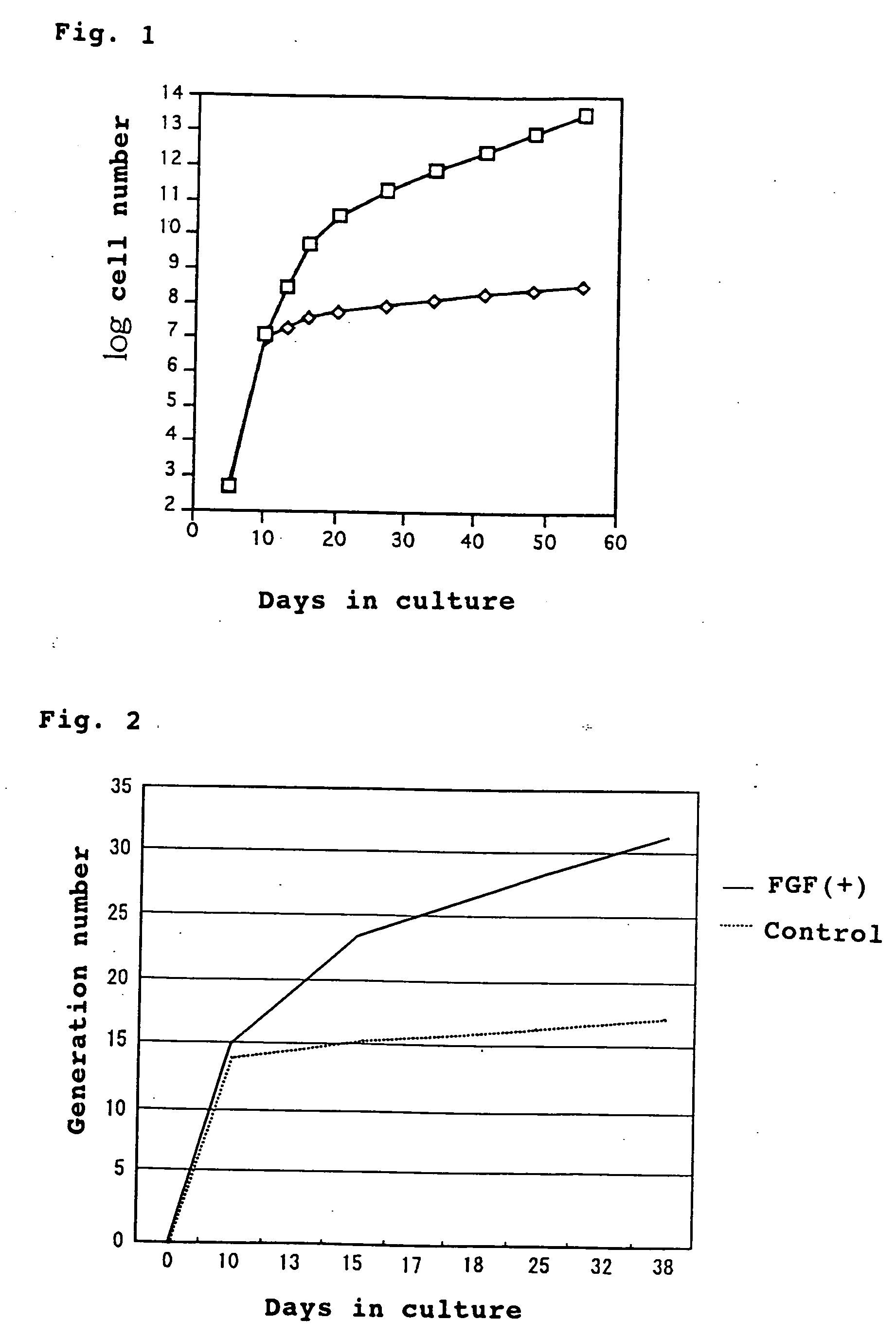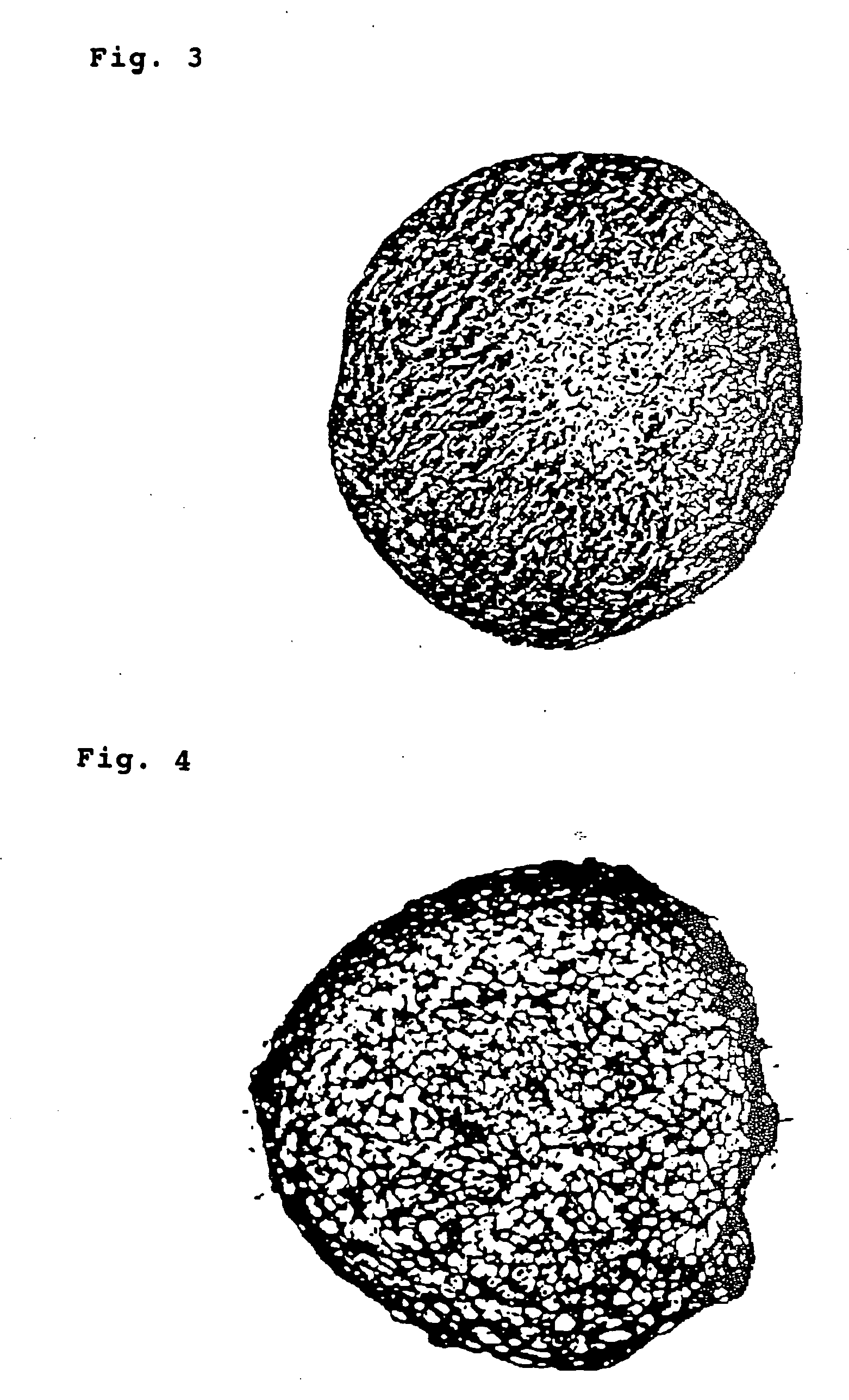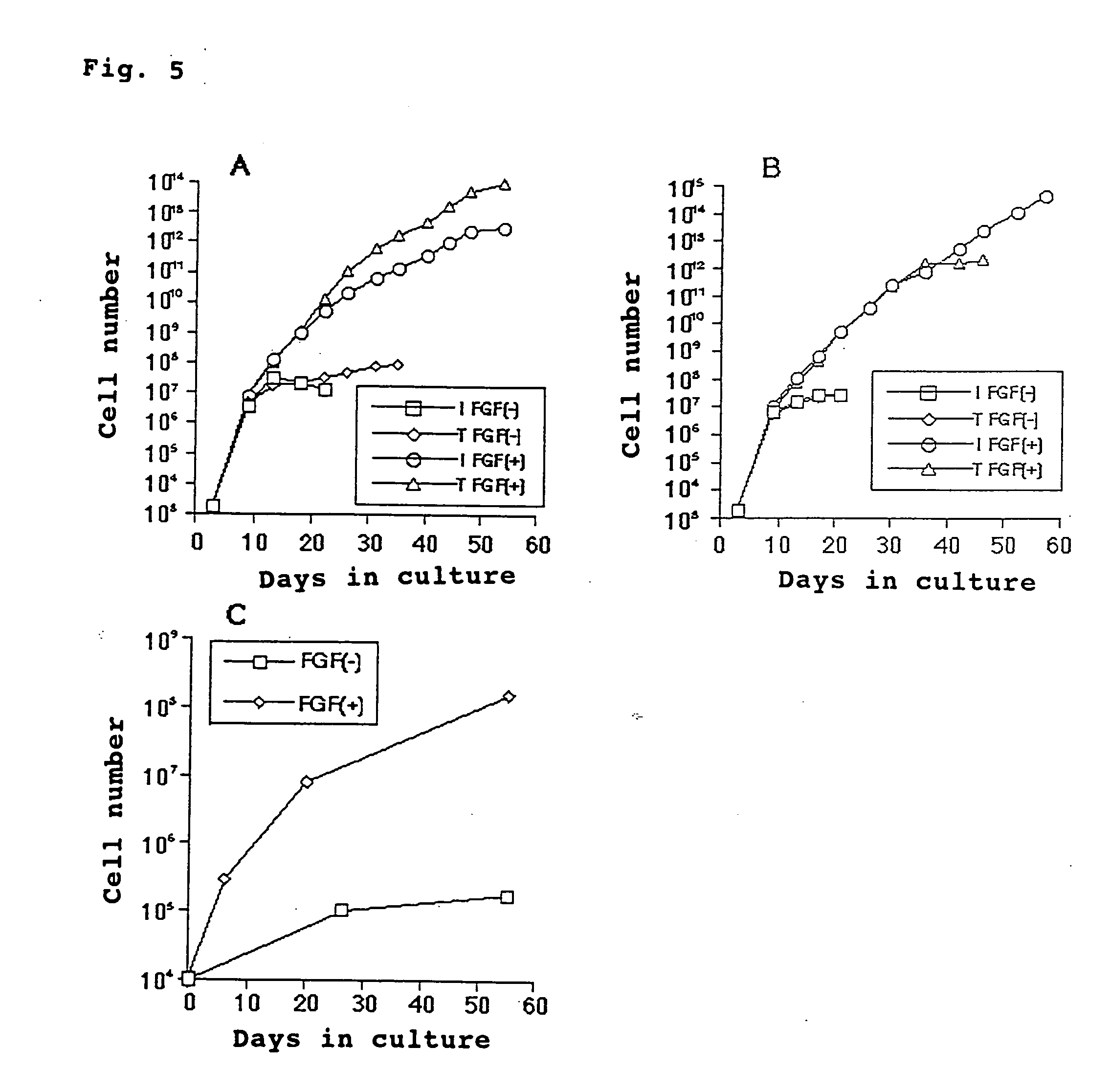Method of culturing mesenchymal stem cells
a mesenchymal stem cell and culturing method technology, applied in the field of culturing mesenchymal stem cells and to the mesenchymal stem cells, can solve the problems of loss of differentiation potential to chondrocytes or osteoblasts, insufficient amount of conventional culture methods,
- Summary
- Abstract
- Description
- Claims
- Application Information
AI Technical Summary
Benefits of technology
Problems solved by technology
Method used
Image
Examples
example 1
Cultivation of Mesenchymal Stem Cells
[0031] 1) Collection of Mesenchymal Stem Cells
[0032] 1-1) Collection of Stem Cells from Bone Marrow
[0033] Femurs and tibias of four-week-old rabbits were freed from muscles, ligament and the like, and extracted. The both ends were cut off. The inside of bone marrow was washed with DMEM medium (containing 32 unit / ml penicillin, 50 .mu.g / ml streptomycin and 6000 units / ml heparin). The emerged medium was subjected to centrifugal separation (at 300.times.g, for 3 minutes) to precipitate stem cells. They were diluted with DMEM medium containing 10% FBS, seeded at 2.times.10.sup.8 cells (containing erythrocytes) / 10 cm culture plate and cultured for three days in the presence of 5% CO.sub.2 at 37.degree. C. to produce adhering cells (about 2000 cells / culture plate), which were used as the bone marrow-derived mesenchymal stem cells. 1-2) Collection of Stem Cells from Periosteum
[0034] Femurs and tibias of four-week-old rabbits were freed from soft tissues...
example 2
Chondrogenic Differentiation
[0038] The mesenchymal stem cells cultured in Example 1 (bFGF added-group and control group, 16.sup.th day from the start of culturing) were treated with 0.05% trypsin+0.2 mM EDTA for 5 minutes to isolate mesenchymal stem cells. Then 2.5.times.10.sup.5 cells were transferred to 15 ml test tube (made of polypropylene) and subjected to centrifugal separation at 1000.times.g for 5 minutes to remove DMEM medium containing FBS. The precipitated cells were mixed with a chondrogenic differentiation medium having the following composition and cultured in centrifugation tubes.
Chondrogenic Differentiation Medium
[0039] High glucose .alpha.-MEM medium
[0040] 10 ng / ml TGF.beta.1
[0041] 100 nM Dexamethasone
[0042] 50 .mu.g / ml Ascorbic acid-2-phosphate
[0043] 100 .mu.g / ml Sodium pyruvate
[0044] ITS-plus
[0045] 6.25 .mu.g / ml Transferrin
[0046] 6.25 .mu.g / ml Insulin
[0047] 6.25 ng / ml Selenic acid
[0048] 5.33 .mu.g / ml Linoleic acid
[0049] 1.25 mg / ml Bovine serum albumin
[0050] The me...
example 3
Osteogenic Differentiation
[0052] The mesenchymal stem cells (bFGF added-group, control group) were collected on 16.sup.th day after cultivation as in Example 2 and transferred into an osteogenic differntiation medium having the following composition.
[0053] Osteogenic Differentiation Medium
[0054] .alpha.MEM medium
[0055] 10% FBS
[0056] 100 nM Dexamethasone
[0057] 10 mM .beta.-Glycerophosphoric acid
[0058] 50 .mu.g / ml Ascorbic Acid 2-phosphate
[0059] The stem cells were cultured in the above-mentioned medium in the presence of 5% CO.sub.2 for 12 days at 37.degree. C., renewing the medium every 2 days.
[0060] When the cells after cultivation were stained by Alizarin Red, the calcification was observed with bFGF added-group. On the other hand with the control group the calcification was remarkably low compared with the bFGF-added group. The results are summarized in the following table.
2 TABLE 2 Osteogenic differentiation bFGF-added +++ group Control group +
PUM
 Login to View More
Login to View More Abstract
Description
Claims
Application Information
 Login to View More
Login to View More - R&D
- Intellectual Property
- Life Sciences
- Materials
- Tech Scout
- Unparalleled Data Quality
- Higher Quality Content
- 60% Fewer Hallucinations
Browse by: Latest US Patents, China's latest patents, Technical Efficacy Thesaurus, Application Domain, Technology Topic, Popular Technical Reports.
© 2025 PatSnap. All rights reserved.Legal|Privacy policy|Modern Slavery Act Transparency Statement|Sitemap|About US| Contact US: help@patsnap.com



